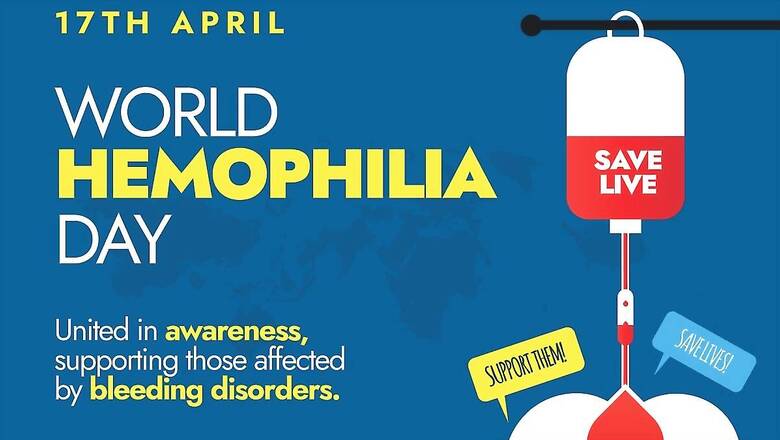
views
World Haemophilia Day, observed annually on April 17 by the World Federation of Hemophilia (WHF), aims to raise awareness about the rare genetic bleeding disorder. This global event provides a platform to educate people about haemophilia and other bleeding disorders while also encouraging improved accessibility for those affected. Its primary goals include raising funds to support patients.
Haemophilia can cause continuous bleeding both internally and externally, due to the absence of blood clotting proteins. As of now, while there is no cure for this condition, various treatments are available to manage the condition. As we observe World Haemophilia Day, let’s explore its theme, history, symptoms, causes and types of this disorder.
World Hemophilia Day 2024: Theme
The theme for this year’s World Haemophilia Day is, ‘Equitable access for all: recognising all bleeding disorders.’ The main idea of this theme is to make sure everyone gets treated, no matter what type of bleeding problem they have, how old they are, where they live or their gender.
World Hemophilia Day: History
The World Federation of Hemophilia (WFH) was founded in 1963 by Frank Schnabel, a Canadian businessman who had hemophilia A since birth. The initial WFH Congress took place in Copenhagen, Denmark, on June 25, 1963 and it was attended by representatives from 12 nations. The day was first celebrated on April 17, 1989, as a tribute to Schnabel’s birthday. During the 10th century, people began noticing that more males were dying from minor injuries compared to females.
This condition was known as abulcasis at that time. However, due to limited technology and knowledge, treatment was not available. In 1803, Dr John Conrad Otto from Philadelphia, USA started studying individuals with bleeding disorders and discovered that the disease was passed from mothers to sons.
Hemophilia Symptoms
The symptoms depend on how severe the deficiency is in an individual. Among them is the appearance of large and unexplained bruises. Bleeding in the gums, nosebleeds, pain and swelling in the joints are also common. Additionally, individuals may experience tightness in the joints, notice blood in their urine and stool. Unusual bleeding, even after vaccinations, can be a symptom of hemophilia.
Hemophilia Causes
In our bodies, blood clotting is a complex process involving different proteins known as coagulation factors. These factors play vital roles in clot formation.
When there’s damage to the skin or in the blood vessels, platelets rush to the injured area to form an initial plug, starting the coagulation cascade. This process helps to clot the blood and stop bleeding.
However, in haemophilia, clotting doesn’t happen naturally due to changes or mutations in genes responsible for producing essential proteins.
As a result, individuals with haemophilia may experience bleeding even from minor injuries or cuts.
Hemophilia Types
Hemophilia has four main forms: Hemophilia A, Hemophilia B, Hemophilia C, and Acquired Hemophilia. Each variant has its own abnormalities and causes.




















Comments
0 comment